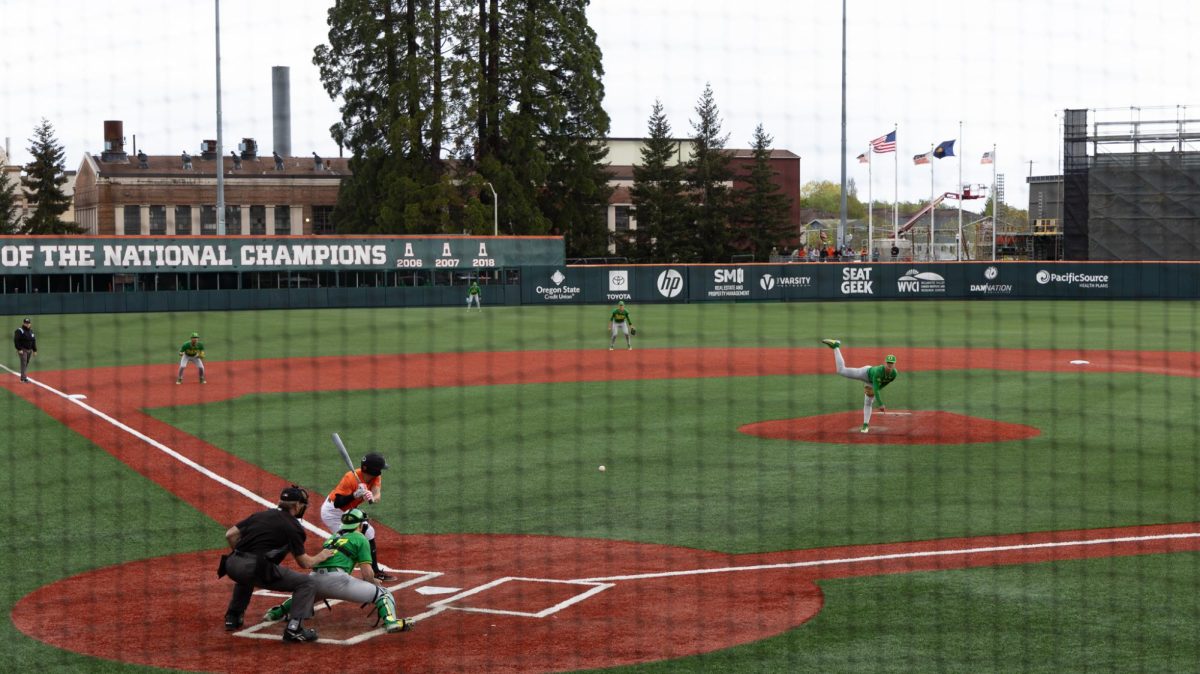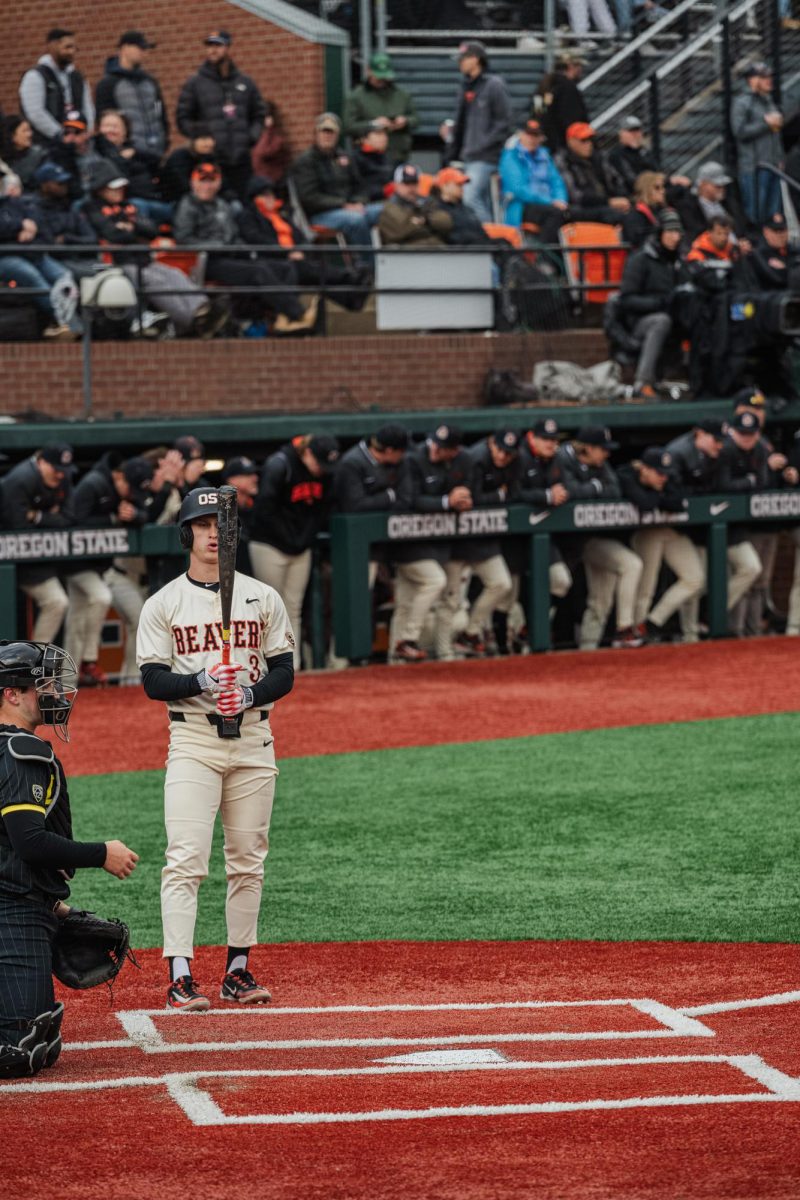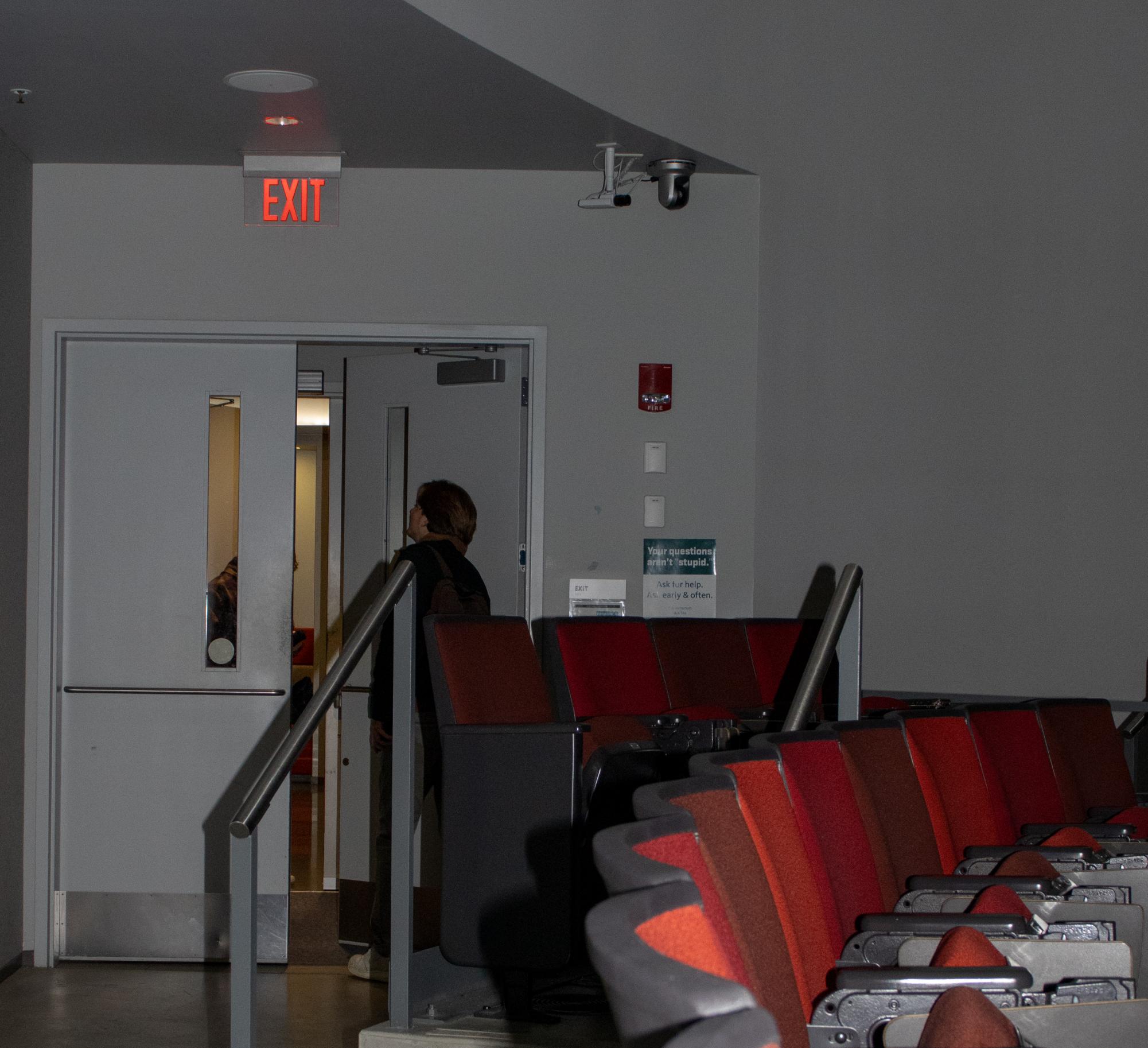Editor’s note: This story contains mentions of sexual assault.
In the spring term of 2023, Carter Trinidad was sitting in his Women, Gender and Sexuality class waiting for his substitute professor to commence the lecture.
Instead, his substitute started playing a film.
Without prior knowledge of the contents of the film, he found himself grappling with an unforeseen feeling of unease he soon felt what some would describe as being “triggered.”
“I’m watching this little girl and this adult male interact in a sexual manner, and it just continued and continued throughout the movie,” Trinidad said about his experience. “I started closing my eyes, and it happened, and I just wanted to leave. But at the same time, I didn’t know if it was disrespectful to leave because that precedent wasn’t set.”
Trigger or content warnings are meant to offer individuals the opportunity to prepare themselves emotionally or to opt out of engaging with content that may be distressing.
However, at Oregon State University, there is no policy requiring the employment of TW/CW, according to Karen Sullivan-Vance, the dean of Student Success in the College of Liberal Arts,
The efficacy of TW/CW has recently been questioned more and some professors are leaning on research that states the system doesn’t work to opt out of using it.
An analysis published in the academic journal Sage Journals said, “Overall, we found that trigger warnings had no meaningful effect on response affect, avoidance or educational outcomes (i.e., comprehension). However, trigger warnings reliably increased anticipatory distress before viewing material.”
Despite the research findings, some OSU students maintain opposing views. Trinidad expressed his concerns and said, “I have a problem when certain majors (or) certain fields feel like trigger warnings are unnecessary, when our studies are revolved around our lives as people, our lives as humans and the way we interact with the world, all studies are kind of similar in that way.”
Trinidad said watching that film in class left him feeling like he had no one to turn to at that moment. He was taken back to the stories of his family’s suffering and how advancements made in fields like medicine come directly from the exploitation of Black and Indigenous suffering.
Watching that film was avoidable, but according to Trinidad the lack of proper communication and warning left him blindsided. An announcement about the film was posted on Canvas, but since it was close to class time, not everyone had a chance to check.
“I didn’t know what I was getting into, and I left that class very scarred,” Trinidad said.
Other students also had varying opinions. Jasleen Quijano, a senior majoring in radiation health physics said, “I don’t think every single thing needs to have a trigger warning or a content warning … but (TW/CW) has a place in academia.”
Vee Escobar, who is in her first year of her master’s in the Public Health Program, said, “I think it should be done just out of courtesy and respect, and not necessarily as an expectation that students leave uncomfortable situations.”
In another instance that the TW/CW system was used in one of Quijano’s classes, she recalls experiencing an adverse reaction to it. She disclosed that she had experienced sexual assault in the past and how seeing the TW/CW put her in that apprehensive state.
“(Sexual assault) is all over the media and I see it all the time constantly, and of course, it does put me in an uncomfortable feeling,” Quijano said.
Seeing media depicting violence is normalized outside of academic spaces, so when she saw it in her reading, she commented that seeing it in her classroom was what put her in that negative state of mind.
“It triggered me more than when I had seen it in movies,” she said.
According to the Sage Journals, TW/CW originated in online feminist forums. Feminist literature, experiences and teachings are tied to heavy topics like rape, domestic violence, racism and misogyny among others. Unfortunately, these topics hold a lot of space when discussing feminist rhetoric.
What was once seen as a gesture of good faith and a way to help those within online spaces, though, started adding to a bigger issue. In an article for The Atlantic, author and feminist Jill Filipovic stated, “We thought we were making the world just a little bit better. It didn’t occur to me until much later that we might have been part of the problem.”
She describes in the article how trigger warnings went from being a practice of courtesy and community care to complaints about anything that could be perceived as problematic.
“When I wrote that a piece of conservative legislation was ‘so awful it made me want to throw up,’ one commenter asked for an eating disorder trigger warning,” Filipovic said. “Sometimes I rolled my eyes; sometimes I responded, telling people to get a grip. Still, I told myself that the general principle—warn people before presenting material that might upset them—was a good one.”
This isn’t something just being discussed among students though. Ariana Berenice is a second-year PhD student and a teaching assistant in the Women, Gender and Sexuality Studies Program. That means teaching what is on her syllabus and gathering the texts that will be studied by students.
She spoke about how she always recommends her students look over the syllabus and see if anything may stand out to them as a potential trigger. If it does, they can bring it to her and they will find a way to work through that and assess if the student is in the right class for them now.
“In my classes because I practice feminist ideologies, I tell (my students), they always have the right to choose whatever they can (handle), even the readings,” Berenice said. “They don’t have to read every single word. They can just skim through the readings and try to get the main point, but if something is annoying for them or too heavy, like violence or something, they can opt-out. They don’t have to dive into the topics.”
She also mentioned that she already has a plan in place for students who don’t feel they can get through a lesson. Aside from different readings, Berenice also offers her students credit opportunities by doing social justice activism or community work.
“(Graduate teaching assistants and professors) have every single type of student in our classroom,” Berenice said. “Being extra mindful is critical.”
She spoke about the necessary steps of accountability and how as educators the onus falls on them to end this cycle of unnecessary potential to relive trauma in a classroom.
“It’s sad that professors perpetuate trauma they went through,” Berenice said. “When does the trauma stop?”
“You need to be the difference,” Berenice said, directed to professors.
If students ever find themselves in a situation, regardless of whether they’d use the word “triggered” to describe it, OSU has resources readily available to help.
Counseling and Psychological Services is a resource that is staffed with psychologists, clinical social workers and professional counselors.
Their office aids students with services like mental health counseling, consultation and outreach. The office is in Snell Hall and more information is available on their OSU webpage.
Anytime, Anywhere is an app that OSU launched as an expansion to CAPS. The app has 24/7 services available to students and operates through a telehealth system. Information about how to download and use the service is available on their OSU webpage.
There is also the University Ombuds Office, whose website says they, “Promote a civil and inclusive campus community by providing informal, impartial and confidential conflict management services to all members of the university community.”
FAQ and contact information are available on their website, and their offices are in Waldo Hall.
There are also off-campus resources, and websites like doesthedogdie.com, a crowd-sourced resource that tracks potential triggers in various media mediums.














































































































